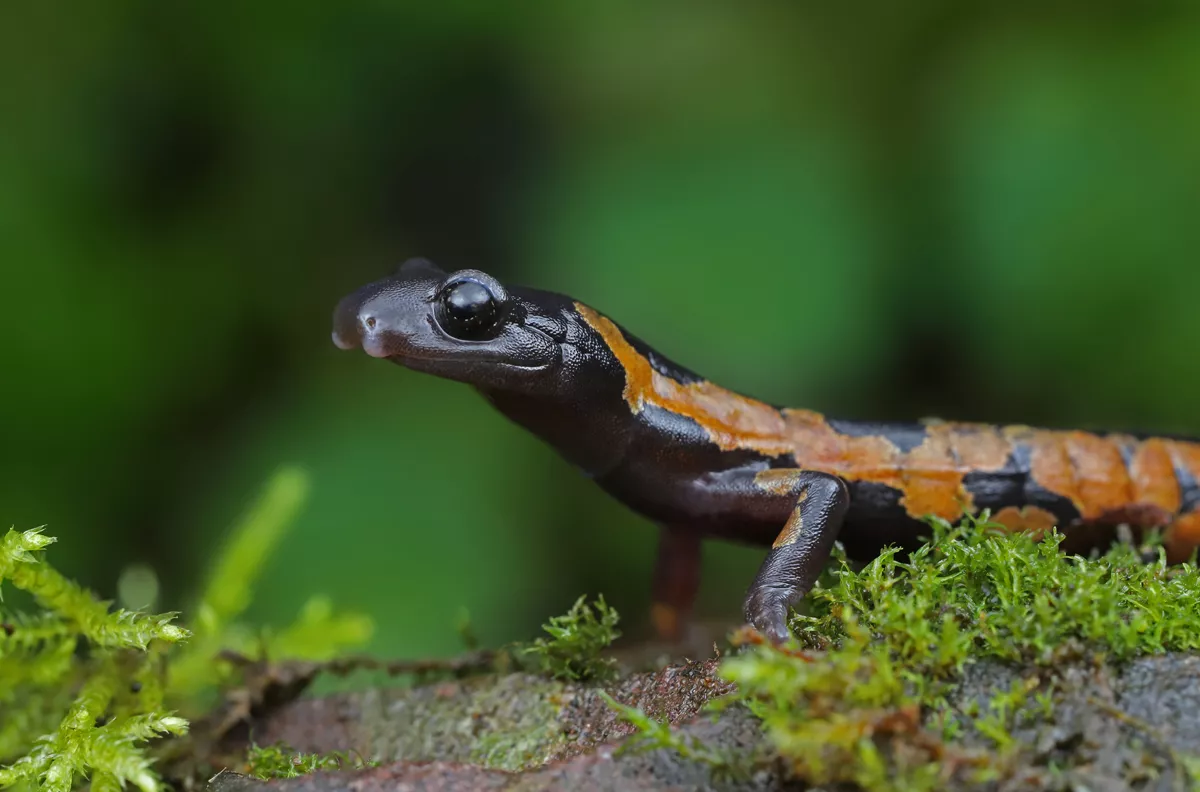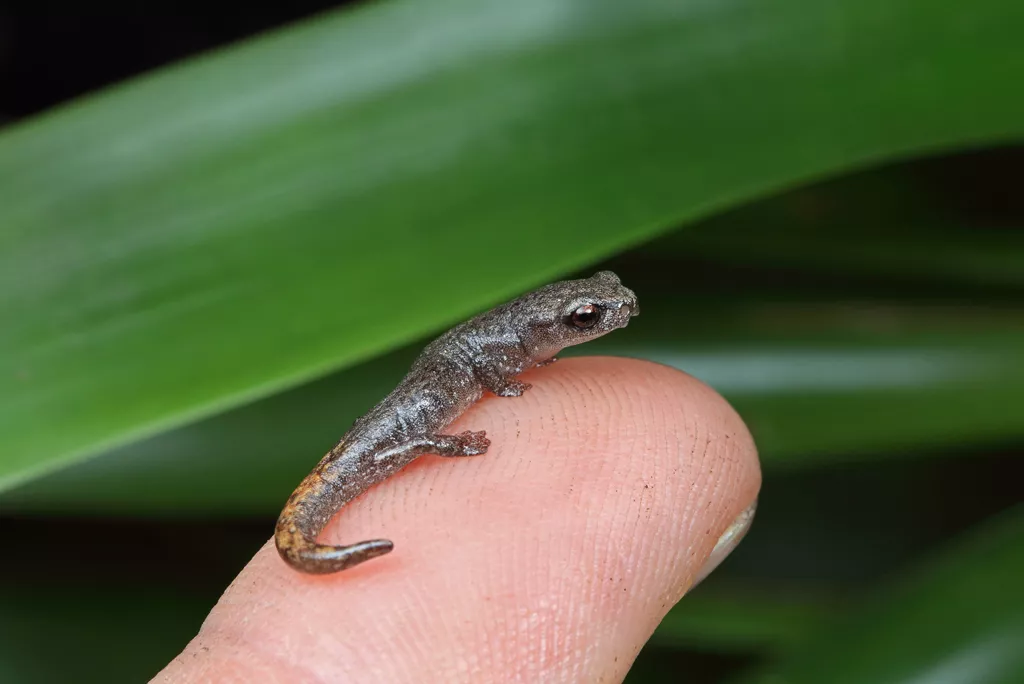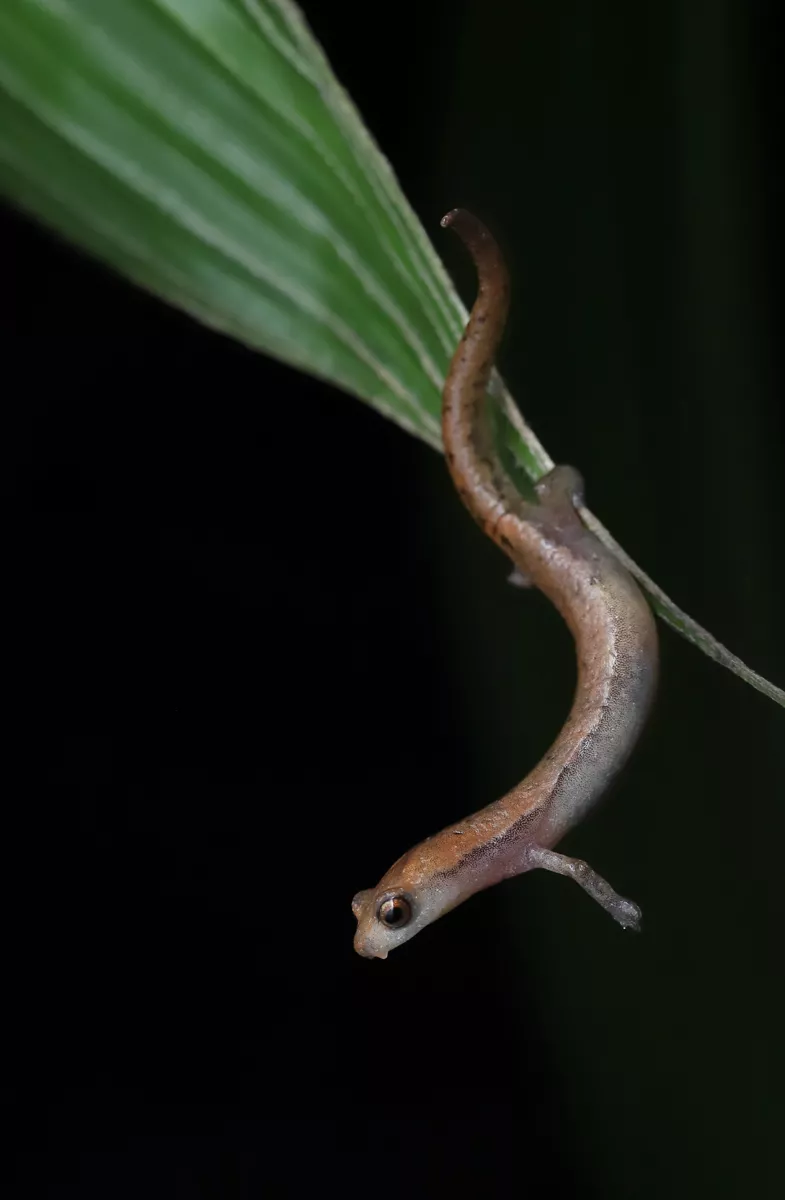In collaboration with the ELKH-DE Reproductive Strategies Research Group and the ELKH Centre for Ecological Research (CER), an international research group studied the reproductive behavior of close to 200 types of salamander. Within the framework of the project they observed the circumstances in which individual species guard their eggs, and which parents do this. The behavior of salamanders living in concealed locations and that are rarely seen is less well known, but, despite this, these species make up a significant group from both an ecological and evolutionary perspective, so the preservation of these species is important in the interests of maintaining biological diversity. The study on the results of the research appeared in the respected journal Scientific Reports.

A tree-dwelling salamander species (Bolitoglossa sp.)
Frogs are probably the best known of the amphibious animals, but tailed amphibians – newts and salamanders – also belong to this group of vertebrates. As the naming of newts and salamanders is not consistent and only covers differences in behavior, all tailed amphibians are referred to as salamanders in this article. Although the number of species in this group is only a tenth of that of frogs and their behavior is less varied, it is precisely this simplicity that makes them a good model for the study of the origins of parental care.

The juvenile offspring of a salamander type that reproduces on land
Live birth only developed in two less populated evolutionary branches, among them the fire salamander, which is also indigenous to Hungary. Otherwise, parental care in tailed amphibians manifests itself in the guarding of eggs. The research group comprising the research fellow Dr Balázs Vági, the lead author of the article, professor Székely Tamás head of research group (ELKH-DE Reproductive Strategies Research Group), as well as Dr Zsolt Végvári, head of CER’s Institute of Aquatic Ecology studied the circumstances under which individual species guard their eggs and which parent performs this role.
During the development of salamanders the majority of species exhibited external fertilization similar to that of fish, but this evolved into internal fertilization, whereby the males deposit a spermatophore on the ground or water bed, which the female picks up with her cloaca. According to the results of the current research it is typical for the female to guard the eggs in these species. This is likely to have developed as such because the individual guarding the eggs can be more certain that the offspring are its own. Of the more primitive species exhibiting external fertilization and parental care, it is the male that guards the offspring. The new study showed that the males that guarded their offspring have large bodies, which could play a role in frequent need to protect the areas where several females may be able to deposit their eggs. This is how they ensure they fertilize as many eggs as possible. By contrast, in the case of those species that fertilize their eggs externally, the males, once they have released their spermatophores, can move on to look for new mates.

A tree-dwelling salamander species (Bolitoglossa sp.)
In addition to the secure development of offspring, internal fertilization has a further significant advantage: the female can deposit her eggs some distance from the mating site, even on dry land. In many species the juveniles skip the larval stage, so the entire reproductive cycle can become independent of water-based habitats. This change in the method of reproduction was of key importance in the development of vertebrates as this may explain how those groups that are entirely independent of water habitats evolved: reptiles, birds and mammals. This is therefore an evolutionary “innovation”, thanks to which the vertebrates were able to conquer most of the suitable habitats on earth.
However, there is a particularly high necessity for parental care on dry land as this is the only way the females are able to ensure their eggs are safe from predators and infection. The other major observation in the new study is that salamanders that lay their eggs on dry land generally guard the base of the nest. What is more, it is the act of protection that made it possible to lay eggs on dry land. The guarding of eggs does not fully protect the offspring from extreme climactic conditions. As the female herself is also prone to hyperthermia and dehydration, reproduction on dry land and parental care only developed in cool locations with plenty of rainfall, where salamanders are highly successful in terms of their evolution. More than two-thirds of the surviving species are comprised of lungless salamander (Plethodontidae) varieties, which have conquered regions as diverse as Sardinia's limestone caves and the treetops of the Amazon rainforest.

Cave-dwelling salamander that reproduces on dry land from the island of Sardinia
(Speleomantes sp.)
Unfortunately, however, tailed amphibians are in grave danger. In addition to the loss of their habitat, the extreme droughts worldwide and the threat of zoosporic (Chytridiomycota) fungus, salamanders are also attacked by a fungal infection that is specific to them. In the interests of protecting salamanders, trade in most species has been outlawed in the European Union and the United States, while indigenous species are protected in their habitats by targeted conservation biological programs. As far as Hungary is concerned, the good news is that the sole habitat of the fire salamander in Budapest was recently designated a protected habitat as of January 1, 2022. In summary, the behaviour of tailed amphibians living in concealed locations and that are rarely seen is less well known, but, despite this, these species make up a significant group from both an ecological and evolutionary perspective, the preservation of which is important in the interests of maintaining biological diversity.
Photo credits: © Laura & Bobby Bok
Further information:
The website of Balázs Vági
The website of Tamás Székely
The website of Zsolt Végvári